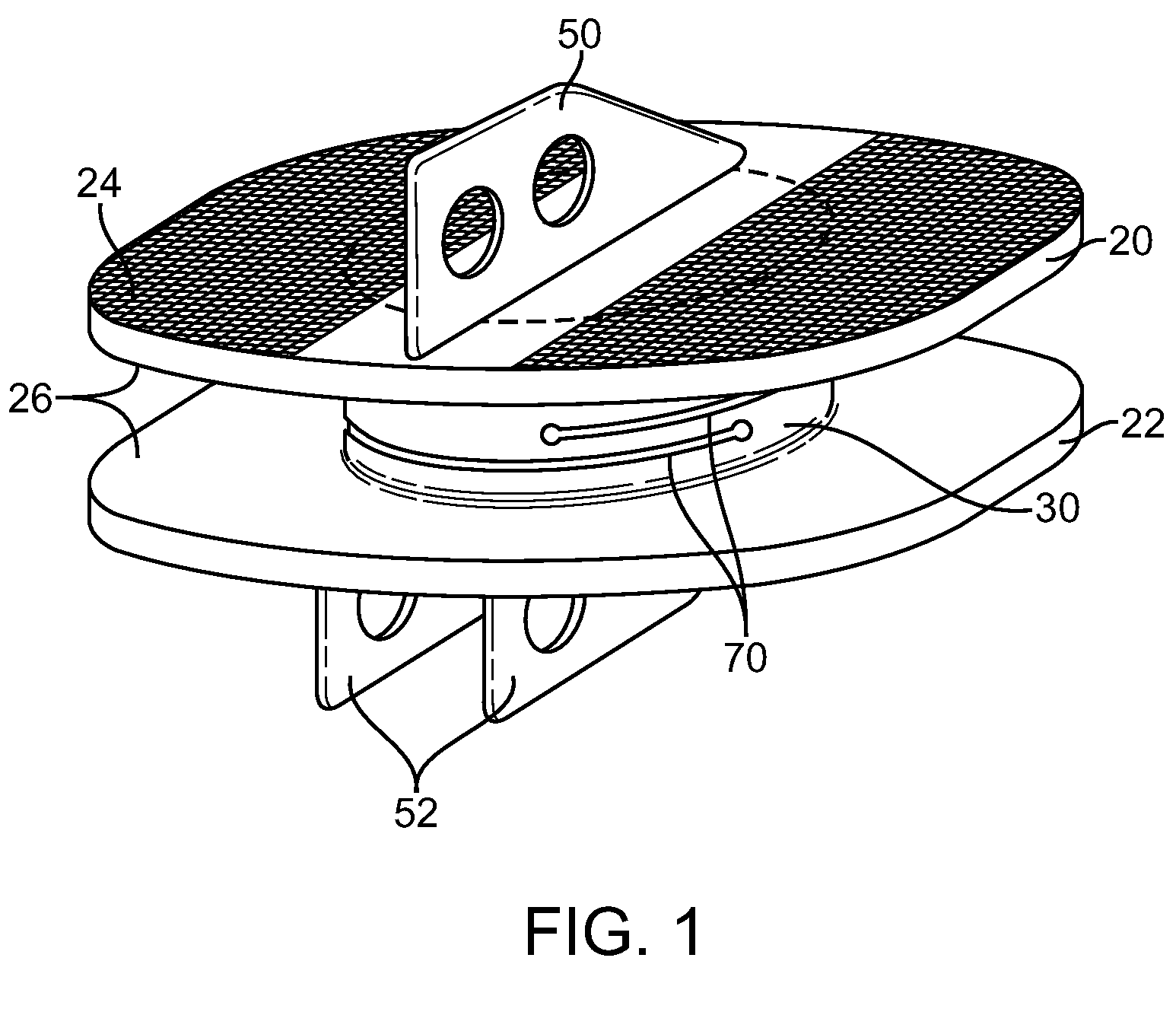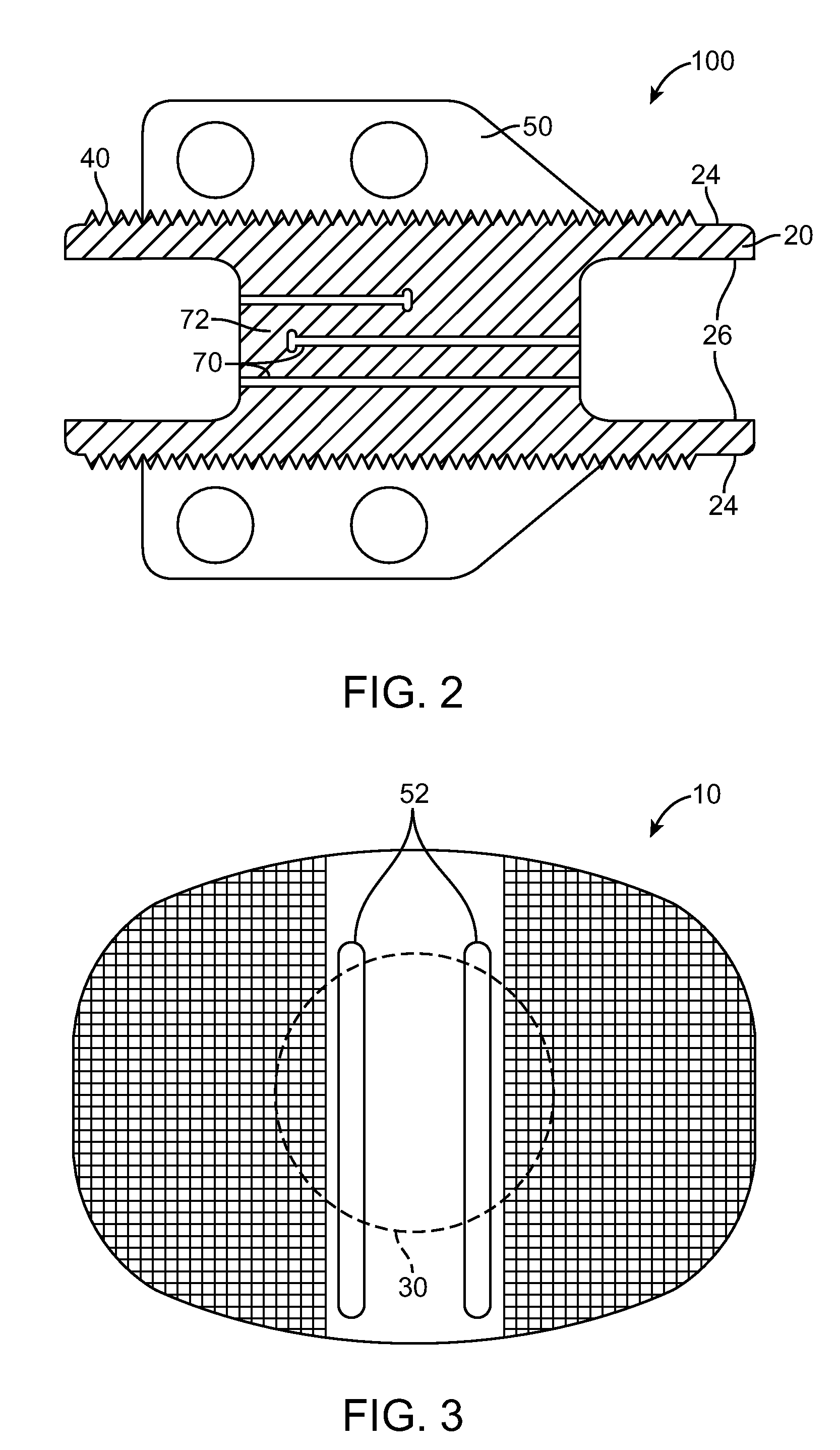Dynamic Spacer Device and Method for Spanning a Space Formed upon Removal of an Intervertebral Disc
- Summary
- Abstract
- Description
- Claims
- Application Information
AI Technical Summary
Benefits of technology
Problems solved by technology
Method used
Image
Examples
Embodiment Construction
[0028]Various embodiments of the present invention generally provide for an intervertebral spacer having upper and lower plates connected by a central connector which provides some limited amount of axial compliance or rotational motion between the upper and lower plates. The compliant intervertebral spacer according to the present invention can maintain disc height and prevent subsidence with a large surface area while substantially reducing recovery time by eliminating the need for bridging bone.
[0029]One example of an intervertebral spacer 10 for maintaining disc height between two adjacent vertebral discs is shown in FIG. 1. The spacer includes two end plates 20, 22, each end plate having a vertebral body contacting surface 24 and an inner surface 26, and a compliant connector 30 interconnecting the inner surfaces of the two end plates. As will be described below some limited rotational and axial motion may be provided between the two plates to reduce loading on the vertebral bo...
PUM
| Property | Measurement | Unit |
|---|---|---|
| Length | aaaaa | aaaaa |
| Fraction | aaaaa | aaaaa |
| Fraction | aaaaa | aaaaa |
Abstract
Description
Claims
Application Information
 Login to View More
Login to View More - R&D
- Intellectual Property
- Life Sciences
- Materials
- Tech Scout
- Unparalleled Data Quality
- Higher Quality Content
- 60% Fewer Hallucinations
Browse by: Latest US Patents, China's latest patents, Technical Efficacy Thesaurus, Application Domain, Technology Topic, Popular Technical Reports.
© 2025 PatSnap. All rights reserved.Legal|Privacy policy|Modern Slavery Act Transparency Statement|Sitemap|About US| Contact US: help@patsnap.com



